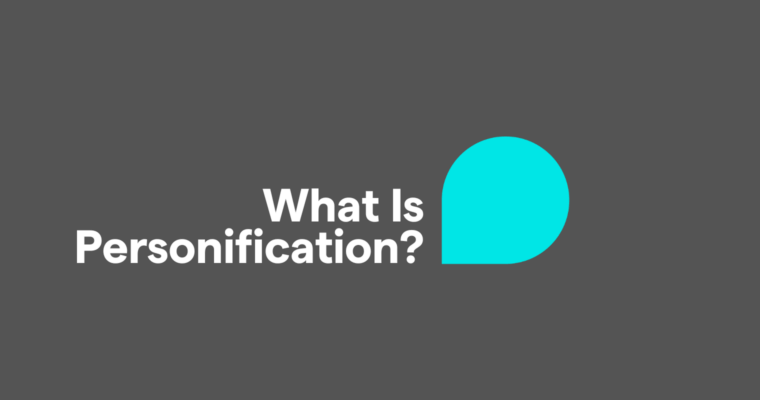
- Personification is a figurative language technique where non-human things are given human traits to create vivid, emotional descriptions.
- Writers use personification to make scenes more relatable, engaging, and emotionally impactful.
- Examples of personification appear in literature, music, and everyday language, such as “the wind howled” or “time grabs you by the wrist.”
In creative writing, you have a lot of freedom that you don’t have in other kinds of writing, like academic and business writing. You don’t have to be objective or literal in your creative writing—if the most accurate way to describe your furniture is to give each piece its own personality, you can do that. And when you do that, you’re using a form of figurative language called personification.
In this guide, we’ll explore the definition of personification, why writers use it, and a variety of examples from literature, music, and everyday language.
Table of contents
Anthropomorphism vs. personification
Meaning of personification
Personification is a type of figurative language in which non-human objects, animals, or abstract ideas are described as having human qualities, such as emotions, actions, or intentions. Writers use personification to create vivid imagery and emotional resonance in their work.
For example, describing a couch as “forgiving” gives readers a sense of comfort or softness, evoking a stronger, more relatable image than simply stating that it’s “brown” or “made of corduroy.”
Personification is one of many literary devices that enhance writing by making descriptions more engaging. Others include synecdoche, metaphor, and onomatopoeia.
You’ve likely encountered personification in various settings and may have even used it without knowing. If you’ve ever said something like “the computer doesn’t want to cooperate,” you’ve used personification.
History of personification
Personification has been used for thousands of years to make abstract ideas more relatable through storytelling. In ancient times, it was known as prosopopoeia—a term discussed by the Athenian orator Demetrius of Phalerum, who described it as a well-established literary device.
Early examples include the Roman goddess Victoria, often depicted on coins and monuments to represent victory. Ancient Rome widely used personification in art and currency, giving human form to virtues and cities.
In Revelation, divine punishments are represented by the Four Horsemen of the Apocalypse, each embodying a specific disaster.
Across cultures and centuries, personification continued to appear in both literature and national symbolism. In the 19th century, Bharat Mata emerged as a goddess symbolizing India, especially during the independence movement. Other national personifications include Uncle Sam (USA), Britannia (UK), and the Merlion (Singapore).
Why is personification used?
When you personify an object, animal, or abstract concept, you make it feel more human. This helps readers connect with non-human elements in your writing on an emotional level. Writers use personification to:
- Help readers empathize with non-human elements
- Clarify relationships between humans and non-human forces
- Deepen emotional connection to human characters
- Emphasize the non-human element’s role in the story
Personification also brings writing to life. It adds flair and imagination to narrative and dramatic texts through vivid, figurative language.
While personification appears in many types of creative writing, it’s especially common in children’s literature. Stories for kids often feature animals, objects, or imaginary creatures as main characters, making personification a natural fit.
Examples of personification
Personification appears in many forms—from simple adjectives to extended metaphors. Below are examples that illustrate how writers bring the non-human to life in vivid, human-like ways.
Basic examples of personification
Examples of personification in different forms
Personification can appear in many grammatical forms. You might see it expressed through a verb, an adjective, or an extended phrase or sentence. Here are some examples that show this flexibility:
Examples of personification combined with other literary devices
Writers frequently use personification in conjunction with other literary devices. Here are a few pairings, with the personification bolded and the other literary device italicized:
In this example, “Meow” is an onomatopoeia.
In this example, “Like a teacher” is a simile.
In this example, “stood tall, looming over them” is both personification and symbolism, with the courthouse’s imposing appearance symbolizing the government’s power.
Examples of personification in literature and poetry
You’ve also encountered personification in literature and poetry. Here are a few famous examples:
Examples of personification in popular music
There are many examples of personification in popular music. Here are a few:
Examples of personification in everyday language
Personification also shows up a lot in everyday phrases and expressions:
Anthropomorphism vs. personification
It’s easy to confuse personification with anthropomorphism, but they serve different purposes in storytelling.
Personification is when human qualities are figuratively assigned to non-human things—like objects, animals, or ideas—to create vivid imagery or emotional effect. In contrast, anthropomorphism is when non-human characters—especially animals or objects—are given literal human traits, such as speech, emotions, or the ability to walk upright.
For example:
- Mickey Mouse is an anthropomorphic mouse—he talks, wears clothes, and behaves like a human.
- SpongeBob SquarePants is an anthropomorphic sponge who lives in a house, works a job, and has complex emotions.
- Tony the Tiger speaks directly to the audience with catchphrases, making him another clear example of anthropomorphism.
On the other hand, personification is typically brief and symbolic. It often appears in poetry or descriptive writing to add depth or dramatic effect. Take the raven in Edgar Allan Poe’s The Raven: the bird is not literally speaking. Instead, the narrator interprets its repeated “Nevermore” as a sign of human-like wisdom or menace. The raven is personified, not anthropomorphized.
Here’s an easy way to remember the difference:
- If the human traits are figurative → it’s personification.
- If the human traits are literal → it’s anthropomorphism.
Personification FAQs
What is personification?
Personification is a type of figurative language in which non-human things—like objects, animals, or ideas—are described using human traits, emotions, or actions.
Is personification a type of figurative language?
Yes. Personification is a form of figurative language that helps writers create vivid, imaginative descriptions by giving human qualities to non-human elements. It’s often used in poetry, storytelling, and everyday expressions.
What are some examples of personification?
- That bike just wouldn’t quit.
- I could feel the crows snickering, mocking me for bringing such an underwhelming gift.
- We loved our house, but it didn’t love us back.
What’s the difference between personification and anthropomorphism?
Personification is figurative—it gives human qualities to something non-human for descriptive effect:
- The church bell sang loud and clear across the sky.
- My pen fought back, refusing to give up any ink.
- Every plant in the garden stood at attention.
Anthropomorphism is literal—non-human characters actually behave like humans, often speaking, dressing, or acting like people. For example, the talking clock and teapot in Disney’s Beauty and the Beast are anthropomorphic.
Why do writers use personification?
Writers use personification to make descriptions more vivid, emotional, or relatable. It helps readers connect with the scene or characters, especially when the non-human element plays an essential symbolic or narrative role.






